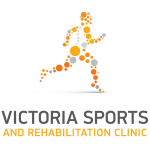With the soccer season well upon us and pre-season a distant memory, activity loads for some children are at their highest, especially if your child is combining other sports and school yard activities. Different sports have a higher prevalence of some conditions but with soccer one of the most common is Sever’s Disease. It is.. read more →
You are excited leading into the summer months, bought some new running shoes and you’ve done a couple of fun runs. The body is feeling the best it has in a while. Then you start waking in the morning with a stiff heel, it may be on the back of the heel or under the.. read more →
With the warmer days well and truly here, everyone celebrates by getting their thongs out. Some may remember I wrote an article 3 years ago ‘Why thongs are bad for your feet.’ I delved into why they are bad for your feet but I didn’t elaborate on the impact they can have on the rest.. read more →
It’s not what you expect to hear when you come in for a treatment. You explain your lower back pain to us, indicating that you are stiff and sore in the morning, you struggle to get out of the car and can’t sit for too long and now we are telling you to exercise. The.. read more →
There always seems to be someone telling you to strengthen your core, whether that be your treating practitioner, government guidelines or the media, but what does this mean, and how is it going to help your back pain? What Is Your Core? Your true core is made up of a cylinder of support that comprises.. read more →
For many of us, getting back into fitness and trying to shed those stubborn winter kilos means hitting the pavement for some cardio. Not wanting to look like a novice, it is easy to get caught up in all the running advice available. Should I have a toe strike, heel strike, mid foot strike?.. read more →
With Year 12 Exams just around the corner, we started thinking about where our poor posture habits began. There has been a focus over the last few years on highlighting postural problems caused by prolonged periods of sitting. To try and manage this we have focused on the ergonomic setup of our desks. Since the.. read more →
During treatment for scoliosis with the Schroth Method and/or Cheneau-Gensingen Bracing, patients may be required to undergo a number of x-rays to assess the magnitude of their curvature. Today X-ray is still the gold standard for identifying and measuring a scoliosis.1 Researchers have calculated that scoliosis patients that have regular exposure to radiation have a.. read more →
The Risser Sign identifies the amount of ossification (the process of cartilage becoming bone) of the human pelvis as a measure of skeletal maturity. The amount of ossification is graded from 0 – 5. The process begins at the front of the pelvis and moves towards the spine. The grades are as follow: Grade 0.. read more →
The Cobb angle is an angular measure of deformity of the spine in the coronal (frontal plane). It is named after American orthopedic surgeon John Robert Cobb, who wanted to find an accurate and consistent measure for the severity of spinal deformities, in particular scoliosis. To measure the Cobb angle you need to: Identify the.. read more →
